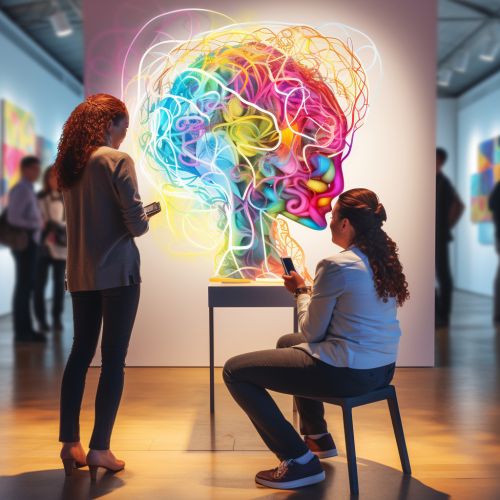Cognitive Neuroscience of Aesthetic Appreciation in Art
Introduction
Cognitive neuroscience is a branch of neuroscience that studies the biological processes that underlie cognition, especially those that involve the brain. The field of cognitive neuroscience has been enriched by the study of aesthetic appreciation, particularly in the realm of art. This article will delve into the cognitive neuroscience of aesthetic appreciation in art, exploring the neural mechanisms that underlie our perception and appreciation of art.


The Neuroscience of Aesthetic Appreciation
Aesthetic appreciation is a complex cognitive process that involves several different areas of the brain. The most prominent of these is the prefrontal cortex, which is involved in decision-making and evaluation. This area of the brain is activated when we make judgments about the aesthetic value of an artwork. Other areas of the brain that are involved in aesthetic appreciation include the amygdala, which is involved in emotional processing, and the insular cortex, which is involved in the experience of emotion.
The Role of Emotion in Aesthetic Appreciation
Emotion plays a crucial role in aesthetic appreciation. When we view an artwork, our emotional response to it can greatly influence our overall appreciation of the piece. This emotional response is mediated by the amygdala, which processes emotional information and sends it to other areas of the brain for further processing. The insular cortex also plays a role in this process, as it is involved in the subjective experience of emotion. The interaction between these two areas of the brain is thought to be critical for the emotional component of aesthetic appreciation.
The Cognitive Processes Involved in Aesthetic Appreciation
Aesthetic appreciation involves several different cognitive processes, including perception, attention, memory, and decision-making. Perception is the process by which we interpret sensory information, and it is the first step in aesthetic appreciation. Attention is the process by which we focus our cognitive resources on certain aspects of an artwork, and it is crucial for the detailed analysis of an artwork that is necessary for aesthetic appreciation. Memory plays a role in aesthetic appreciation by allowing us to compare an artwork to others we have seen in the past, and decision-making is involved when we make judgments about the aesthetic value of an artwork.
The Influence of Culture and Experience on Aesthetic Appreciation
Culture and experience can greatly influence our aesthetic appreciation of art. Our cultural background can shape our aesthetic preferences, as can our previous experiences with art. For example, individuals who have been exposed to a particular style of art from a young age may be more likely to appreciate that style as adults. Similarly, individuals who have had positive experiences with art in the past may be more likely to appreciate art in general. These influences are thought to be mediated by the prefrontal cortex, which is involved in the formation of preferences and judgments.
Conclusion
The cognitive neuroscience of aesthetic appreciation in art is a complex and multifaceted field. It involves the interplay of several different areas of the brain, as well as a variety of cognitive processes. Furthermore, it is influenced by a range of factors, including emotion, culture, and experience. Despite the complexity of this field, it is clear that our brains are intricately wired to appreciate art, and that this appreciation is a fundamental part of our human experience.
